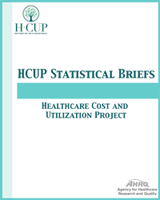Table 3Hospital rates of patient safety and adverse events in 34 States, 2011 and 2014
| Patient safety or adverse event | Average hospital rate (per 1,000 dischargesa) | Percent change in average | |
|---|---|---|---|
| 2011 | 2014 | ||
| Mortality rates among selected discharges | |||
| Death rate in low-mortality diagnosis related groups (DRGs) (PSI 02) | 0.48 | 0.45 | −6.2 |
| Death rate among surgical inpatients with serious treatable complications (PSI 04) | 131.79 | 117.50 | −10.8 |
| Patient safety event rates among medical and surgical discharges | |||
| Pressure ulcer rate (PSI 03)b | 0.26 | 0.20 | −23.1 |
| Iatrogenic pneumothorax rate (PSI 06)b | 0.27 | 0.24 | −11.1 |
| Central venous catheter-related blood stream infection rate (PSI 07) | 0.31 | 0.10 | −67.7 |
| In hospital fall with hip fracture rate (PSI 08)b | 0.46 | 0.12 | −73.9 |
| Patient safety event rates among elective surgical discharges | |||
| Postoperative respiratoryfailure rate (PSI 11)b | 8.86 | 8.25 | −6.9 |
| Postoperative sepsis rate (PSI 13)b | 4.42 | 3.87 | −12.4 |
| Patient safety event rates among surgical discharges | |||
| Perioperative hemorrhage or hematoma rate (PSI 09)b | 4.44 | 4.08 | −8.1 |
| Postoperative acute kidney injury requiring dialysis rate (PSI 10)b | 0.56 | 0.48 | −14.3 |
| Perioperative pulmonary embolism or deep vein thrombosis rate (PSI 12)b | 3.48 | 2.95 | −15.2 |
| Patient safety event rates among abdominopelvic surgical discharges | |||
| Postoperative wound dehiscence rate (PSI 14)b | 2.18 | 1.70 | −22.0 |
| Unrecognized abdominopelvic accidental puncture or laceration rate (PSI 15)b | 0.80 | 0.71 | −11.3 |
Abbreviations: DRG, diagnosis related group; PSI, Patient Safety Indicator
Notes: The unit of observation is the hospital. Hospitals were included in the analysis for an individual PSI if there were at least 10 at-risk denominator cases in that PSI in a given year. PSIs are reported as the number of adverse patient safety events per 1,000 discharges at risk. The hospital PSI rates are risk adjusted for age, sex, age-sex interaction, major diagnostic categories, modified DRGs, and comorbidities. Some rates are risk adjusted for transfers from another facility or severity of complications present on admission. Data include discharges billed to all expected payers (Medicare, Medicaid, private insurance, no insurance, and other).
- a
Depending on the indicator, the number of cases at risk (denominator) is based on discharges for low mortality DRGs (PSI 02), medical and surgical discharges (PSI 03, PSI 06, PSI 07, PSI 08), elective surgical discharges (PSI 04, PSI 11, PSI 13), surgical discharges (PSI 09, PSI 10, PSI 12), or abdominopelvic surgical discharges (PSI 14, PSI 15).
- b
Included in the calculation of the Patient Safety and Adverse Events Composite (PSI 90)
Source: Agency for Healthcare Research and Quality (AHRQ), Center for Delivery, Organization, and Markets, Healthcare Cost and Utilization Project (HCUP), State Inpatient Databases (SID) from 34 States, 2011 and 2014
- Impact of date stamping on patient safety measurement in patients undergoing CABG: experience with the AHRQ Patient Safety Indicators.[BMC Health Serv Res. 2008]Impact of date stamping on patient safety measurement in patients undergoing CABG: experience with the AHRQ Patient Safety Indicators.Glance LG, Li Y, Osler TM, Mukamel DB, Dick AW. BMC Health Serv Res. 2008 Aug 13; 8:176. Epub 2008 Aug 13.
- Review Refinement of the HCUP Quality Indicators[ 2001]Review Refinement of the HCUP Quality IndicatorsDavies SM, Geppert J, McClellan M, McDonald KM, Romano PS, Shojania KG. 2001 May
- Review Assessing Estimates of Patient Safety Derived From Coded Data.[J Healthc Qual. 2017]Review Assessing Estimates of Patient Safety Derived From Coded Data.Narain W. J Healthc Qual. 2017 Jul/Aug; 39(4):230-242.
- Establishing standard performance measures for adult stroke patients: a nationwide inpatient sample database study.[World Neurosurg. 2013]Establishing standard performance measures for adult stroke patients: a nationwide inpatient sample database study.Rahman M, Neal D, Fargen KM, Hoh BL. World Neurosurg. 2013 Dec; 80(6):699-708.e2. Epub 2013 Aug 28.
- Review Measures of Patient Safety Based on Hospital Administrative Data - The Patient Safety Indicators[ 2002]Review Measures of Patient Safety Based on Hospital Administrative Data - The Patient Safety IndicatorsMcDonald KM, Romano PS, Geppert J, Davies SM, Duncan BW, Shojania KG, Hansen A. 2002 Aug
- Table 3, Hospital rates of patient safety and adverse events in 34 States, 2011 ...Table 3, Hospital rates of patient safety and adverse events in 34 States, 2011 and 2014 - Healthcare Cost and Utilization Project (HCUP) Statistical Briefs
Your browsing activity is empty.
Activity recording is turned off.
See more...
